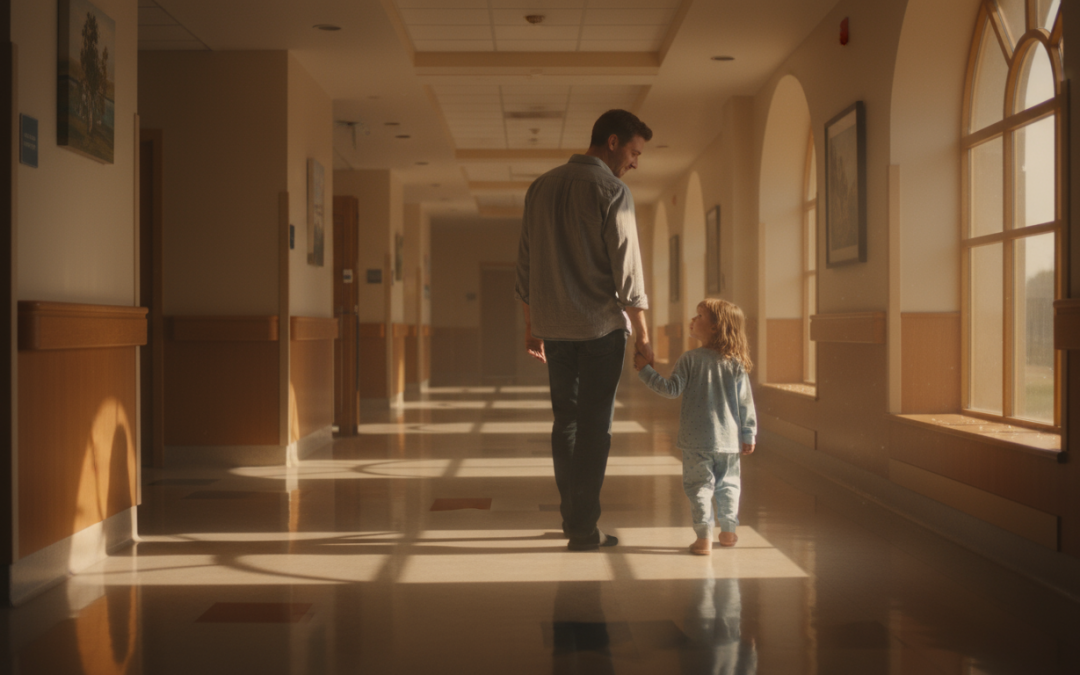Editor’s Note
In the early years of Pompe research, access to enzyme replacement therapy (ERT) was extremely limited. Long before FDA approval, a handful of families, physicians, and researchers worked tirelessly to secure treatment for patients diagnosed with Pompe disease. Their unwavering persistence transformed individual lives and laid the foundation for the care and treatment available to Pompe families today.
As part of our ongoing patient advocacy work, we share Morgan’s story: a powerful example of how courage, collaboration, and advocacy can triumph even in the face of disaster. This story honors the patients and families who helped pave the way toward approved therapies and improved access for all.
Early Access to Lifesaving Therapy
In the early 2000s, a Pompe diagnosis felt like watching a door close. For families diagnosed with the infantile-onset variant of the disease, that door seemed to slam shut within the first year of life. For those facing the late-onset variant, it closed more slowly—but just as inevitably—as progressive muscle weakness took hold in childhood or beyond.
There was no approved treatment. No clear path forward. Just the weight of knowing what was coming.
Then came a sliver of light: Genzyme’s investigational enzyme replacement therapy, Myozyme (alglucosidase alfa), represented the first real hope many families had ever known. This groundbreaking work emerged through close collaboration with pioneering Pompe experts: Dr. Ans van der Ploeg at Erasmus Medical Center and Dr. Priya Kishnani at Duke University. Their tireless dedication helped transform research into something that could actually save lives.
While formal clinical trials moved forward, a small number of children gained access to the therapy through Compassionate Use or Emergency Use programs. These were special FDA pathways designed for patients in life-threatening situations when no approved treatment exists. These early experiences didn’t just save individual lives; they helped build the foundation for FDA approval of Myozyme in 2006, opening that door for everyone who would follow.
When a Storm Changed Everything
Before Myozyme’s approval, Morgan was one of those children. Diagnosed with Pompe disease, she was receiving the experimental ERT through Genzyme’s Compassionate Use program at Tulane University Hospital and Clinic in New Orleans. Tulane wasn’t part of the formal Phase II/III clinical trial, but Genzyme and the FDA had recognized it as a compassionate access site: a lifeline for patients who desperately needed treatment.
Then Hurricane Katrina hit in August 2005.
Tulane Hospital flooded. The facility closed. Patient care was thrown into chaos. And Morgan’s father, Jim, found himself in every parent’s worst nightmare. His daughter needed treatment to survive, and that treatment had just become impossible to access.
But Jim refused to accept the impossible.
He knew of another Pompe patient, Tiffany House, who was participating in a Genzyme clinical trial in Texas. Jim reached out to Marsha Zimmerman, the research nurse at the University of Texas Health Science Center at San Antonio (UTHSCSA) who coordinated Tiffany’s treatments. What happened next was nothing short of extraordinary.
Working with incredible speed and determination, Marsha collaborated closely with Genzyme, the FDA, and the local Institutional Review Board. Together, they secured Emergency Use authorization so Morgan could continue her lifesaving ERT in San Antonio.
Morgan’s treatments resumed. A father’s determination, combined with the swift action of a compassionate medical team and the cooperation of regulatory authorities, had overcome what seemed insurmountable—even in the midst of a national disaster.
What Morgan’s Story Still Teaches Us
Morgan’s experience became part of a pivotal chapter in Pompe history, but it’s more than that: It’s a reminder of what becomes possible when people refuse to give up on each other.
Her story reflects the courage and unity of the early Pompe community: families, researchers, physicians, and advocates working together against impossible odds. These early Compassionate and Emergency Use cases did more than save individual lives. They demonstrated both the urgency and the effectiveness of ERT, building the case for broader access when approval still felt far away.
When the FDA approved Myozyme in 2006, it was a scientific milestone. But it was also a tribute to families like Morgan’s. To the fathers who wouldn’t stop fighting. To the medical teams who moved mountains. To the community that refused to let bureaucracy stand between children and hope.
That door that once seemed closed? Morgan and her family helped push it open. Not just for themselves, but for everyone who would walk through it after them.
If you have a story about navigating Pompe disease, whether it’s about accessing treatment, advocating through obstacles, or finding hope in difficult moments, we’d love to hear from you. Contact us through our Facebook page.


